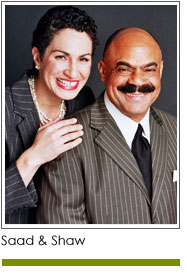 Management transition at the top level is a subject that most people do not like to talk about. It takes on the tone of a major illness, divorce, and in some cases death – it is just that negative. But it does not have to be. Talking about – and planning for – leadership transition can be a very positive thing.
Management transition at the top level is a subject that most people do not like to talk about. It takes on the tone of a major illness, divorce, and in some cases death – it is just that negative. But it does not have to be. Talking about – and planning for – leadership transition can be a very positive thing.
Most outstanding CEOs think their tenure is forever. They don’t want to think about their time as a leader coming to an end. We understand. You are on top of your game, you are giving your all to your organization, and you are seeing the fruits of your labor. In fact, you are looking towards the future, how to build on what you have built. But that is selfish and unfair.
Think of it this way: your success may become a meaningless memory if you don’t build your bench, groom your successor, and work towards a defined date with your board by which you will transition out. Ouch! That might not sound like where you want to put your energy – but it is important for the good of the organization and the people you serve.
If your departure is abrupt it can raise questions amongst long-time donors, funders, and supporters who may choose to take a “wait and see” attitude before making a meaningful gift. The organizations you partner with, your employees and volunteers, and your board may lessen their affection for your nonprofit – key people may grumble or leave.
You may think to yourself, “people want me to lead, not leave.” That is true. And it is only the brave who will broach the subject directly. But people will talk about your tenure – and more importantly – your succession plan, even if they don’t talk about it to you.
You inspire confidence within your community and amongst those who fund your organization when it is clear that there is a qualified person waiting in the wings, or if not, a process and criterion that will be used to identify, recruit, and onboard the next leader.
Bottom line: Most well run organizations have a succession plan. And it does more than sit on a shelf – nonprofits with a long-term leader may include “progress in implementing the succession plan” as part of the executive’s annual evaluation.
Here are three things to consider:
1. What is your intended tenure? Does your board know this?
2. Who are you grooming as your replacement – or as a strong second-in-command?
3. Is there a formal succession plan in place? Does the board and executive leadership understand what it means, and what actions they will need to take now or in the future?
Take time to open the conversation within your organization. If you are a board member, you need and want to know about your executive’s tenure so you can best provide oversight. If you are an executive, assess your timeframe and talk with your board.
Together, the CEO, board, and administrative team can plan for an orderly transition. Your nonprofit is worth it.
Copyright 2020
Mel and Pearl Shaw of Saad&Shaw – Comprehensive Fund Development Services. Let us help you find your way through this unknown time. Video and phone conferencing services always available. Call us at (901) 522-8727. www.saadandshaw.com.














